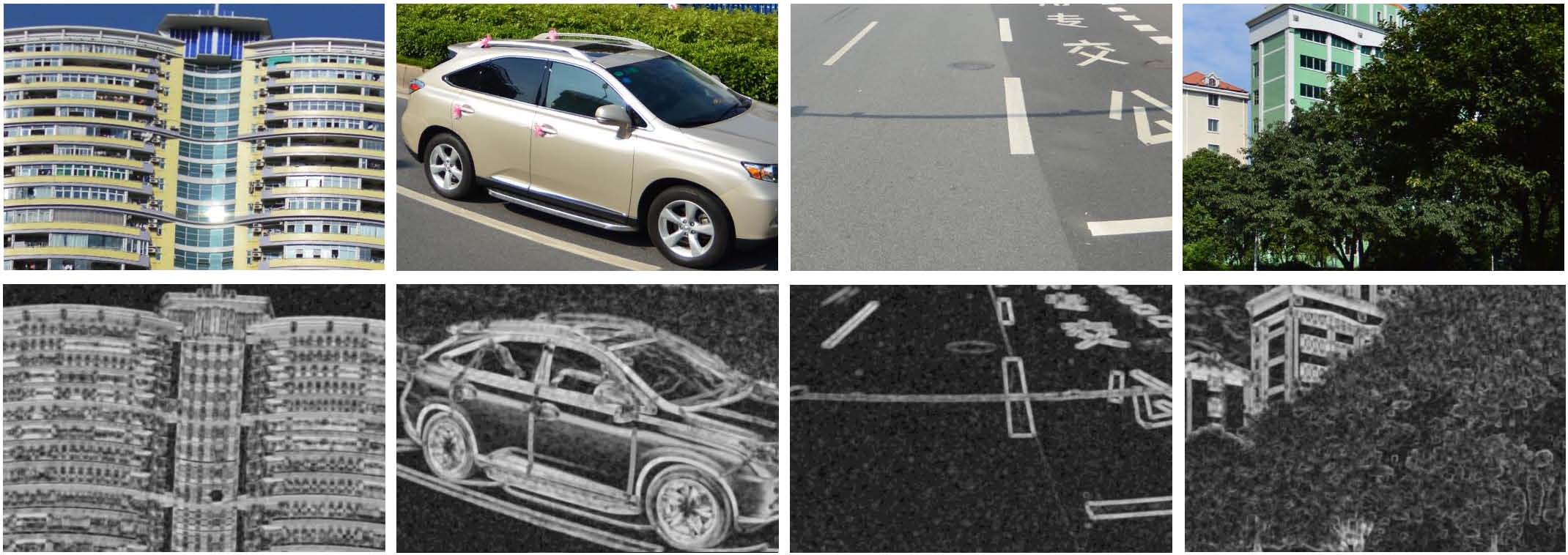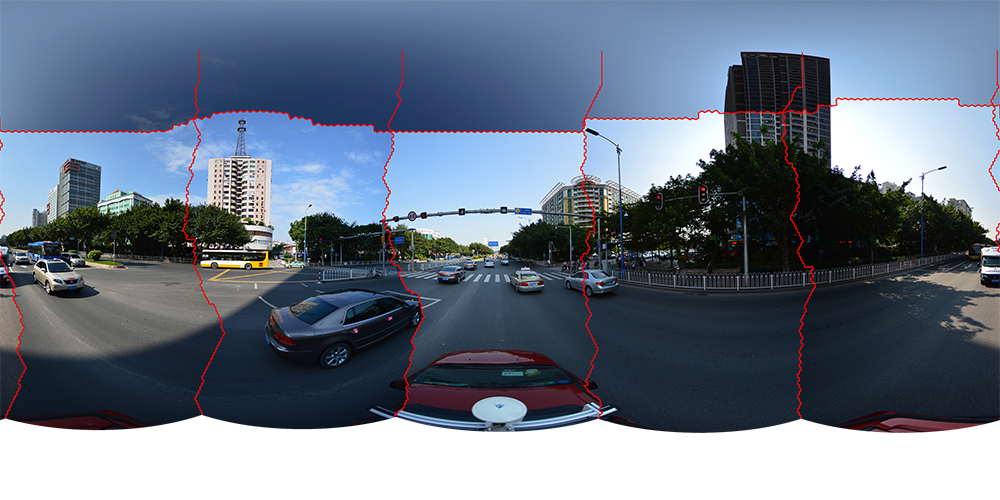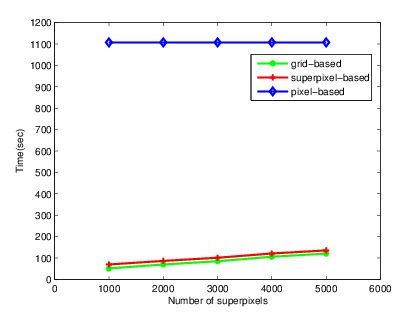Superpixel-Based Optimal Seamline Detection via Graph Cuts for Panoramic Images
Li Li, Jian Yao*, Xiaohu Lu, and Jing Ren
School of Remote Sensing and Information Engineering, Wuhan University, Wuhan, Hubei, P.R.China
*EMail: jian.yao@whu.edu.cn
*Web: http://www.scholat.com/jianyao http://cvrs.whu.edu.cn
[ ] The executable files are released.download (15/1/2015).
] The executable files are released.download (15/1/2015).
[ ] The test dataset is added.download (15/1/2015).
] The test dataset is added.download (15/1/2015).
Abstract
A novel method for seamlessly mosaicking panoramic images based on superpixels in the graph cuts energy minimization framework is proposed. To effectively ensure that all seamlines are detected in the laterally continuous regions with the high image similarity and the low object dislocation, the energy functions adopted in graph cuts combine the pixel-level similarities of image characteristics, including color and gradient, and the texture complexity. Instead of finding the optimal solution of seamlines in overlapped regions via graph cuts among the entire set of pixels, we find it among superpixels created from input images, which greatly improves the efficiency of the global graph cuts energy optimization because that the number of elements in graph cuts dramatically decreases. Experimental results demonstrate that the superpixel-based method is capable of generating high quality seamlines as the pixel-based method but greatly reduces the computation time.

Figure 1: An illustration example of the optimal seamline detection method via graph cuts.
Algorithm
To greatly reduce the computation cost, we formulated the optimal seamline detection as a graph cuts energy minimization problem in the superpixel domain instead of in the pixel domain in this paper. The superpixels were generated from the input source images to ensures the accuracy of image segmentation. Not only the color and gradient differences were considered into the cost of each pixel but also the texture complexity inspired by HOG (Histogram of Oriented Gradient) was integrated. Based on those, the optimal seamlines are located along the boundaries of superpixels via graph cuts, as shown in Figure 1.
(a) SLIC |
(b) VCells |
Figure 2: The superpixels produced by SLIC and VCells in the left image and projected onto the right image. The image size is 1352×4069 and the number of superpixels is 3000.

Figure 3: The four typical regions (top) happened in Street View panoramic images and their corresponding normalized texture complexity maps (bottom) where the lighter regions indicate higher texture complexity.
Experimental Results
The images of outdoor scenes captured by an integrated multi-camera equipment with 6 Nikon D7100 cameras of 24 million pixels installed on a mobile vehicle platform to illustrate the performance of our method for mosaicking panoramic images. Figures 4 show the seamline detection results of panoramic images.








Figure 4: The seamline detection results
Comparison with Pixel-Based Methods
(a) Squard-grid-based
(b) Superpixel-based
(c) pixel-based
Figure 5: Visual comparison of the squared-grid-based (a), the superpixel-based (b) and the pixel-based (c) methods.

